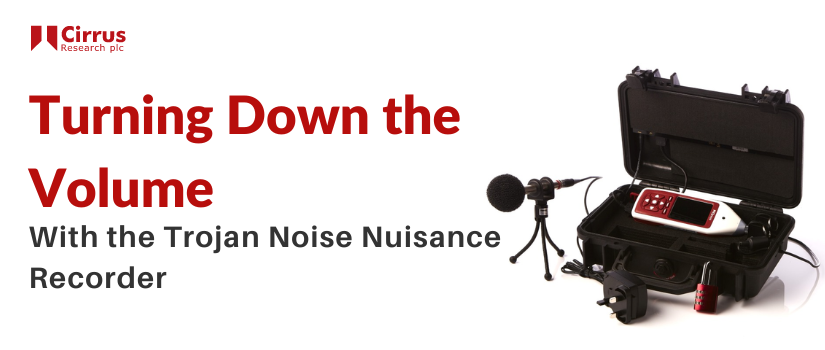Doesn’t time fly? It’s already been 10 years since Control of Noise at Work Regulations were introduced in the UK. But have you been following the legislation correctly? Here’s an overview of what the Noise at Work Regulations mean and some common mistakes you should be avoiding.
Considering that legislation to limit noise at work has been around for at least a couple of decades, I find it staggering that we currently have around 18,000 people in the UK suffer deafness, tinnitus or other hearing conditions caused by excessive noise at work.
A lot of those cases could well be historical, dating back to when noise at work legislation was more in its infancy or not so rigorously enforced. However, no matter how responsible UK employers are now, there is still a gap in terms of knowledge, understanding and application when it comes to Noise Induced Hearing Loss (NIHL) in the workplace.
So, What are the Noise at Work Regulations?
Control of Noise at Work Regulations 2005 introduced safety limits for daily noise exposure. It’s one of the most overlooked risks in the workplace but both employees and personal injury lawyers are becoming increasingly aware.
I looked into this and each year there are thousands of claims being made for the newly coined term “Industrial Deafness” due to occupational noise. Call centres are even springing up that specialise in cold calling on the issue to drum up business, so this isn’t something that is going to go away any time soon.
What are the Legal Noise Exposure Limits?
The noisier it gets, the less time you can legally be exposed to that noise level. If these daily limits are exceeded, then the chances of developing NIHL are dramatically increased. These limits relate to the levels of noise exposure employees face over an average working day or week.
It is worth remembering a single machine might exceed these levels but as long as the overall noise level over the average working period does not exceed these noise levels, you are within the legal limits.
There are also levels of noise exposure that you mustn’t exceed. These are called Exposure Limit Values. If your readings exceed any of these Values, you must take action to reduce noise in your workplace. Remember, the aim here is to prevent NIHL.
What are the Action Levels and Limit Values for Noise?
By ensuring you are complying with these action levels, you are protecting your business from potential action from the Health & Safety Executive (HSE), as well as personal injury claims. However, I have come across many Noise at Work mistakes over the years. You can pretty much boil most of them down to just five.
Common Mistake 1: Not Doing Anything
This obviously sounds risky but it is surprising how many employers still prefer to bury their head in the sand when it comes to NIHL, possible HSE prosecution and personal injury claims. The risks are very simple:
- You could become liable if your employees develop NIHL
- You are breaking the law – the Control of Noise At Work Regulations 2005
- You could be exposed to high noise levels that damaging your own hearing
One UK manufacturer was recently fined £16,000 and ordered to pay £11,000 towards the cost of the prosecution for breaching this Act. The simple way to fix this is with a Noise Risk Assessment to identify where there may be a risk and those likely to be affected.
You need to obtain a reliable estimate of your employees’ exposures and compare the exposure with the exposure action values and limit values. Work out what you need to do to comply with the Regulations and see if there are noise-control measures you can introduce or if hearing protection is required. You must also regularly assess noise risks to ensure optimum protection.
The most common risks include machinery, sound systems and high-traffic areas. If you’ve changed a process or introduced new equipment, it’s time to do another survey. It may seem onerous but at the end of the day your employees and you have a right to work in an environment that isn’t going to damage their hearing and ultimately your overall health.
Common Mistake 2: Not Using the Right Equipment
Cutting corners on your instruments means readings might not be accurate or provide enough data, which would negate the whole process in the eyes of the law. It’s not enough to be seen to be putting some measures in place for employee protection they have to be the right measures.
There are many different types of noise measurement instruments – handheld, personal, portable and mounted – so it’s important you are using the right one. While cheaper instruments might sound attractive, their accuracy level and detail can be called into question. Cirrus has a range of instruments for every type of occupational, personal and environmental noise issue but I’m not going to list them all here.
The Control of Noise at Work Regulations 2005 is pretty clear about what you need to use to comply. If you are using an instrument that doesn’t meet the Standard, your readings could be invalid.
I don’t want to come over as Doctor Doom so despite all these warnings, you don’t need over complicate matters. Choose an instrument that offers what you need, not everything going. Think about the practicalities of your work place and ask – is it safe and practical to use a handheld sound level meter? Is access an issue? If so, then the answer could be a personal noise dosimeter. This is an unobtrusive device that is worn by the employee and captures all the noise data you need.
You must ensure that the equipment meets the required Standards as it is all about the Regulations. Your sound level meter should meet at least Class 2 of BS EN 61672 – 1:2003 (the current Standard), or at least Type 2 of BS EN 60804:2001 (the former Standard).
- The equivalent continuous A – weighted sound pressure level (LAeq)
- The maximum C – weighted peak sound pressure level (LCPeak)
Common Mistake 3: Not Measuring Correctly
Despite your efforts you are still breaching the best practice guidelines and could end up either under or over-protecting your employees against excessive noise. If you aren’t getting an accurate representation of the noise levels then how can you protect against the risks?
It is also worth noting that just because you have measured the noise in a certain area it doesn’t mean it represents the whole noise exposure. If you don’t follow the best practice guidelines, your assessments could be invalid during potential disputes.
The Regulations say that the noise should be measured at the position of the operator’s head, preferably without the operator being present. If they do need to be present then the measurement should be made at least 15cm away but near enough to be representative.

If you do this then you are now capturing accurate data on the risks facing your employees. This means you can assess and analyse noise risks based on these measurements and choose appropriate hearing protection and noise control measures to protect your workforce, as well as your business.
You will also need to check to see if your employee is right or left-handed. This can make a difference to your readings as you need to make sure you’re measuring from the side of the body that faces the most exposure.
Common Mistake 4: Not Calibrating Your Instrument

Not doing this properly or regularly means your readings could be inaccurate. You’re also not complying with the Regulations. You won’t know if your instrument has been damaged or malfunctioned before using it.
The microphones of the instruments are very sensitive (for obvious reasons) so you want to make sure it’s measuring accurately. An acoustic calibrator should be used to check the meter each day before and after making measurements. Your calibrator should meet at least Class 2 of BS EN 60942:2003.
There’s also Recalibration to consider. Recalibration will ensure that both your instruments and the calibrator are working correctly, like an MOT and Service. You must send your instruments to be recalibrated at least every two years to comply with the Regulations I actually recommend you do it every year and certainly with Cirrus Research this means your 15-year product warranty is validated for another year and gives you another 12 months of no quibble protection from accidents or malfunctions.
Common Mistake 5: Not Controlling Noise Risks
You’ve identified a noise risk in your workplace and issued hearing protection to your workforce. Job done, right?
Wrong! Hearing protection is always the last resort. You should be trying to reduce the noise risks first. Businesses that don’t do this can be fined by the Regulator. All you have done is identify a noise hazard and given all our workforce hearing protection but there’s a still a risk. Can you reduce the risk?
You might need to consider investing in quieter machinery or adjusting working patterns to reduce exposure times. There are also plenty of noise reduction measures you can introduce, such as sound barriers, walls and enclosures.
If you can’t reduce the Noise and you have attempted to control noise risks in your business but they’re still above the legal limit you have no choice but to issue hearing protection. Once taken into account, noise exposure should be between 70 dB and 80 dB.
There is also software now available that automatically recommends a range of hearing protection linked directly to the data taken from your noise measurements. Cirrus, for example, has developed its own software package NoiseTools. This offers a quick and simple way to download, analyse and report the noise measurement information recorded by our Optimus® range of sound level meters and doseBadge® noise dosimeter, as well as recommend products that will suit your exact noise needs. It’s always important to select protectors that are suitable for the working environment so consider how comfortable and hygienic they are.
Measure Your Success – Putting it into Action
The guidance here is on implementing an accurate process for measuring Noise At Work. Now you have to review your risk assessments and ensure you are adhering to these best practices. It’s not just about protecting your employees, it’s also about protecting your business against potential injury claims and fines for breaching these Noise at Work Regulations.




